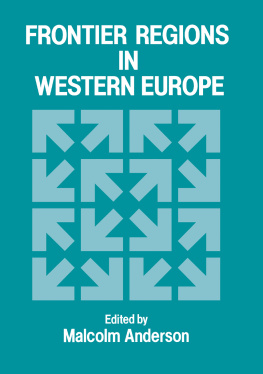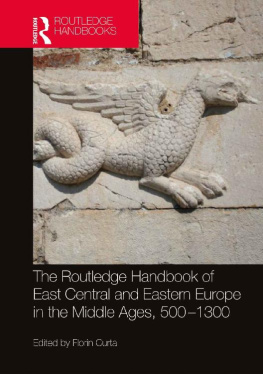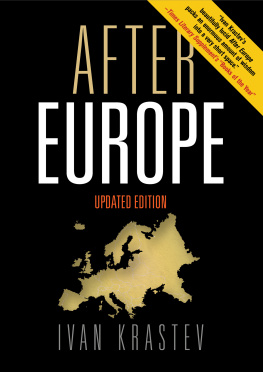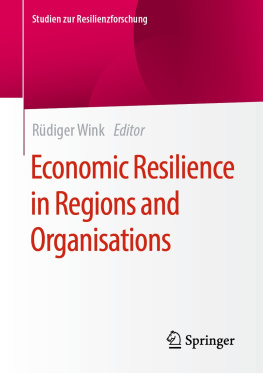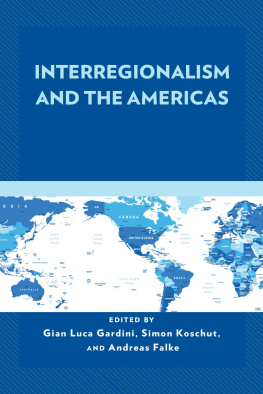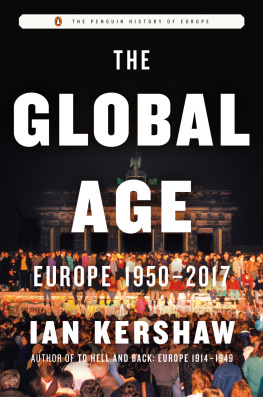This is a book to read for anyone who wants to understand the reason of regional differences, their historical reasons, and recent social-political consequences of the conflicts within Europe and including the crisis of the European Union.
This comparative study is the successful and stimulating culmination of Professor Berends prolonged work on and contribution to our understanding of the forces that explain Europes recent past and economic experience. It will feed into and stimulate the vital debate about the idea and experience of Europe.
Economic History of a Divided Europe
This book presents the sharp regional differences within the integrating European continent. Four regions Northwestern Europe, Southern Europe, Central Europe, and Eastern-Southeastern Europe represent high, medium, and relatively less-developed levels of economic advancement. These disparities have emerged as a result of historical differences that produced and reinforced cultural and behavioral differences.
The author examines the distinctions between the regions, looks at how these differences transpired and became so retrenched, and answers the question of why some countries were able to elevate to higher levels of economic development while others could not. This book is unique in that it provides a timely historical analysis of the main causes of the most pressing conflicts in Europe today. Readers will come away from this book with a deeper understanding of the sharp divergence in economic standing between the four different regions of Europe, as well as knowledge about how institutional corruption and other cultural features exacerbated these variations. The book also offers a better understanding of major European Union conflicts between member countries and between member and nonmember countries, as well as the rise of autocratic regimes in certain countries. The book begins with a short history of European integration throughout European civilization and then goes on to discuss the modern reality of integration and attempts to homogenize the Continent that divided into four different macro-regions.
It will primarily appeal to scholars, researchers and students studying Europe from various fields, including economics, business, history, political science, and sociology, as well as a general readership interested in Europes past, present, and future.
Ivan T. Berend is a distinguished research professor at the University of California, Los Angeles (UCLA), USA. He is a member of the American Academy of Arts and Sciences; the British Academy; the Academy of Europe; and the Austrian, Hungarian, Bulgarian, and Czech Academies of Sciences. He was president of the International Historical Association between 1995 and 2000 and is author of 35 books.
Routledge Studies in the European Economy
Greek Employment Relations in Crisis
Problems, Challenges and Prospects
Edited by Horen Voskeritsian, Panos Kapotas and Christina Niforou
Centrally Planned Economies
Theory and Practice in Socialist Czechoslovakia
Edited by Libor dek
SME Finance and the Economic Crisis
The Case of Greece
Alina Hyz
Russian Trade Policy
Achievements, Challenges and Prospects
Edited by Sergei Sutyrin, Olga Y. Trofimenko and Alexandra Koval
Digital Transformation and Public Services
Societal Impacts in Sweden and Beyond
Edited by Anthony Larsson and Robin Teigland
Economic Policy, Crisis and Innovation
Beyond Austerity in Europe
Edited by Maria Cristina Marcuzzo, Antonella Palumbo and Paola Villa
The Economics of Monetary Unions
Past Experiences and the Eurozone
Edited by Juan E. Castaeda, Alessandro Roselli and Geoffrey E. Wood
Economic History of a Divided Europe
Four Diverse Regions in an Integrating Continent
Ivan T. Berend
For more information about this series, please visit: www.routledge.com/series/SE0431
Economic History of a Divided Europe
Four Diverse Regions in an Integrating Continent
Ivan T. Berend

First published 2020
by Routledge
2 Park Square, Milton Park, Abingdon, Oxon OX14 4RN
and by Routledge
52 Vanderbilt Avenue, New York, NY 10017
Routledge is an imprint of the Taylor & Francis Group, an informa business
2020 Ivan T. Berend
The right of Ivan T. Berend to be identified as author of this work has been asserted by him in accordance with sections 77 and 78 of the Copyright, Designs and Patents Act 1988.
All rights reserved. No part of this book may be reprinted or reproduced or utilised in any form or by any electronic, mechanical, or other means, now known or hereafter invented, including photocopying and recording, or in any information storage or retrieval system, without permission in writing from the publishers.
Trademark notice: Product or corporate names may be trademarks or registered trademarks, and are used only for identification and explanation without intent to infringe.
British Library Cataloguing-in-Publication Data
A catalogue record for this book is available from the British Library
Library of Congress Cataloging-in-Publication Data
Names: Berend, T. Ivan (Tibor Ivan), 1930 author.
Title: Economic history of a divided Europe: four diverse regions in an integrating continent/Ivan T. Berend.
Description: Abingdon, Oxon; New York, NY: Routledge, 2020. |
Series: Routledge studies in the European economy |
Includes bibliographical references and index.
Identifiers: LCCN 2019050362 (print) | LCCN 2019050363 (ebook) |
Subjects: LCSH: EuropeEconomic conditions. |
Regional disparitiesEurope.
Classification: LCC HC240 .B394675 2020 (print) |
LCC HC240 (ebook) | DDC 330.94dc23
LC record available at https://lccn.loc.gov/2019050362
LC ebook record available at https://lccn.loc.gov/2019050363
ISBN: 978-0-367-89650-8 (hbk)
ISBN: 978-1-003-02031-8 (ebk)
Typeset in Bembo
by Newgen Publishing UK
Contents
Illustrations
Figure
Tables
Today, Europes 44 states (as the United Nations calculates, including six city- or mini-states such as San Marino or the Vatican City) represent as many as nearly one-quarter of the worlds roughly 200 states (the United Nations has 193 member states). While its landed area of 10.18 million square kilometers (3,931 million square miles) is just seven percent of the worlds territory, it is home to 852 million people, roughly 11 percent of the worlds population.
Despite its relatively small area, Europe represents a special civilization. Together with its name, it was born from the ancient time Greek and then Roman civilizations. The Roman empire with its highest level of ancient civilization gradually enlarged and covered most of Western and parts of Central Europe, up to the dividing eastern border, the limes of River Danube, which separated the eastern half of the continent from the empire. This development culminated in a Christian-European civilization, represented by the Carolingian empire of the eighth and early ninth centuries, ruled by the legendary Charlemagne, who converted pagans and beheaded those who resisted. In the tenth century, the Carolingian empire was replaced by the emergent Holy Roman Empire, a much less centralized formation, which also incorporated vast parts of Western and Central Europe into its almost thousand-year reign.



